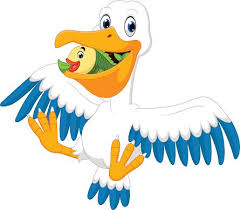Stamp: Brown Pelican (Pelecanus occidentalis) (United States of America 1972)
Brown Pelican (Pelecanus occidentalis) (United States of America 1972)
20 September (United States of America ) within release Wildlife Conservation (1972) goes into circulation Stamp Brown Pelican (Pelecanus occidentalis) face value 8 United States cent
| Stamp Brown Pelican (Pelecanus occidentalis) in catalogues | |
|---|---|
| Stanley Gibbons: | Sg: US 1471b |
Stamp is horizontal format.
Brown omitted.Also in the issue Wildlife Conservation (1972):
- Stamp - Bighorn Sheep (Ovis canadensis) face value 8;
- Stamp - Bighorn Sheep (Ovis canadensis) face value 8;
- Stamp - Brown Pelican (Pelecanus occidentalis) face value 8;
- Stamp - Brown Pelican (Pelecanus occidentalis) face value 8;
- Stamp - Northern Cardinal (Cardinalis cardinalis) face value 8;
- Stamp - Northern Cardinal (Cardinalis cardinalis) face value 8;
- Stamp - Northern Fur Seal (Callorhinus ursinus) face value 8;
- Stamp - Northern Fur Seal (Callorhinus ursinus) face value 8;
Stamp Brown Pelican (Pelecanus occidentalis) it reflects the thematic directions:
Animals are multicellular, eukaryotic organisms of the kingdom Animalia (also called Metazoa). All animals are motile, meaning they can move spontaneously and independently, at some point in their lives. Their body plan eventually becomes fixed as they develop, although some undergo a process of metamorphosis later on in their lives. All animals are heterotrophs: they must ingest other organisms or their products for sustenance.
Birds (Aves), a subgroup of Reptiles, are the last living examples of Dinosaurs. They are a group of endothermic vertebrates, characterised by feathers, toothless beaked jaws, the laying of hard-shelled eggs, a high metabolic rate, a four-chambered heart, and a strong yet lightweight skeleton. Birds live worldwide and range in size from the 5 cm (2 in) bee hummingbird to the 2.75 m (9 ft) ostrich. They rank as the class of tetrapods with the most living species, at approximately ten thousand, with more than half of these being passerines, sometimes known as perching birds. Birds are the closest living relatives of crocodilians.
Environmental protection is the practice of protecting the natural environment by individuals, groups and governments.Its objectives are to conserve natural resources and the existing natural environment and, where it is possible, to repair damage and reverse trends.
Pelicans (genus Pelecanus) are a genus of large water birds that make up the family Pelecanidae. They are characterized by a long beak and a large throat pouch used for catching prey and draining water from the scooped-up contents before swallowing. They have predominantly pale plumage, except for the brown and Peruvian pelicans. The bills, pouches, and bare facial skin of all pelicans become brightly coloured before the breeding season.



